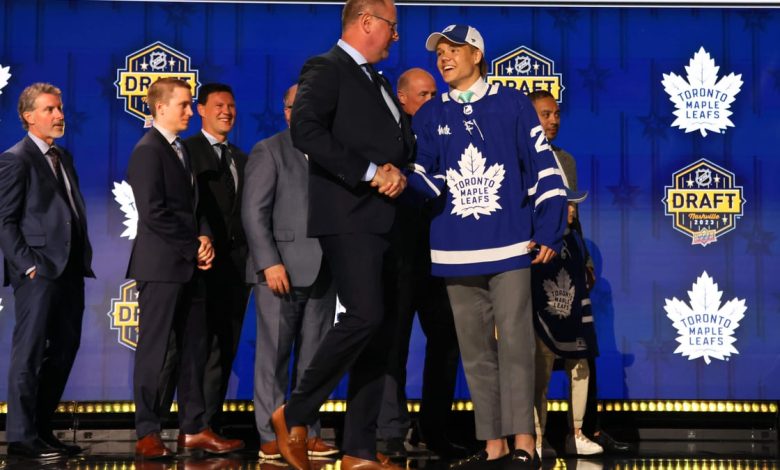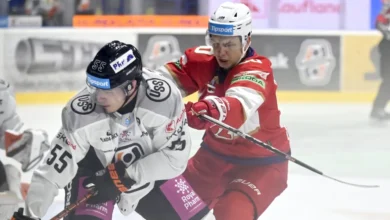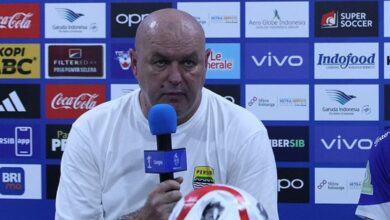Reasons why the Maple Leafs should keep and use the No. 23 pick in the NHL Draft

Doesn’t the summer of 2017 feel like a lifetime ago for the Toronto Maple Leafs?
Mike Babcock was the coach. The Leafs’ new young core offered nothing but promise with No Trade Clauses and contract disputes far off in the distance. The playoffs were not a time for habitual disappointment but were the goal to aspire to.
And you’d have to go all the way back to the halcyon days of 2017 for the last time the Leafs made their own first-round NHL Draft pick in Timothy Liljegren. Since that draft, the Leafs have moved their top pick for a variety of reasons, including making up for contract mistakes in free agency. The Leafs have drafted twice in the first round of the last five drafts. Both picks were acquired via trade.
Meanwhile, recent Stanley Cup champions have gotten contributions from players they picked with their own selections in the first round, or outside it.
And so this shouldn’t come as a shock to anyone who’s followed my coverage of the Maple Leafs at the draft in Previous seasons: The Leafs should hold onto their first-round choice at No. 23, even if trade rumors will be bouncing off the top of the Sphere and back on draft day.
Of course, there are other tempting choices. What if the Leafs can package that pick to aid in the acquisition of the first pair defenseman they have had their eye on for ages? What if you could get a goaltender with the pick and make things more stable between the pipes?
These arguments are visible to me. And I present to you three related reasons that lead to the same conclusion: One of the Leafs’ general managers, Brad Treliving, or director of amateur scouting, Wes Clark, need to take the mike when it comes time to select the 23rd pick.
The Easton Cowan factor
After selecting the 2024 OHL MVP late in the first round of the 2023 draft, can the Leafs capture lightning in a bottle twice with another late first-round pick?
At the very least, the Leafs scouting staff led by Clark have proven they deserve a chance to try. Clark has earned a deserved reputation for approaching drafting and player assessment a little differently than other teams. There are intangibles the Leafs look for, including a deep inner drive to help players sustain the pressures of playing in Toronto, where the lights can shine brighter and frankly, burn a little hotter.
“(Cowan) doesn’t shy away, both on the ice and off the ice, from pain,” Leafs assistant general manager, player development Hayley Wickenheiser told The Athletic. “He’s going to go to the hard places and do the work. And you want that sometimes more than just pure talent because that will can take you a long way.”
And plenty of teams undoubtedly wish they had taken a chance on Cowan the way Clark did.
It doesn’t end there. Fraser Minten was taken early in the second round in 2022 and has since made the Leafs out of camp and then captained Canada at the world juniors. Dennis Hildeby is one of the better goaltending prospects in the NHL. Given how close these players – the products of limited picks in Clark’s last two drafts – already are to the NHL, so why deny Clark and his scouts the opportunity to discover who else they can produce?
Cowan’s rise alone should serve as a reminder that the first round’s bottom can contain some fascinating players who have the potential to play in the NHL in the near future. Several 23-year-olds have been drafted since 2012, including Brock Boeser, Semyon Varlamov, Andre Burakovsky, Mike Matheson, Tyson Foerster, and Wyatt Johnston.
Sure, beyond the first few picks the draft is a crapshoot, and there’s no assurance that Clark and the Leafs will select the next Johnston or Cowan at number 23. However, the initial outcomes should be positive enough to allow Clark and company to cook on June 28.
The young core factor
Somewhat quietly, the Leafs have built a secondary core of young players to complement Auston Matthews, William Nylander and Morgan Rielly: Matthew Knies, Joseph Woll, Bobby McMann became close friends this season. Fraser Minten roomed with Knies to start the season. Nick Robertson is coming out of his shell. Cowan looks built for life as a Leaf and will likely join that core next season.
This season, Rielly told The Athletic that he witnessed the development of a new young core during a preseason game against the Montreal Canadiens.
“There was a moment when I was out there tonight and I was looking at (Knies, Minten, and Cowan), and they were all interacting with one another.” That’s cool to see. I sense a connection being formed,” Rielly remarked.
Treliving ought to hold onto that bond and wait for it to start yielding returns.
Instead of investing money in players who are at the top of the lineup on July 1st, filling gaps year after year with sporadic guys on PTOs, one-year contracts, or overpaying for middle-of-the-line players in free agency is not a strategy for long-term success.
The Leafs can continue to build out that core by adding another young piece with the 23rd pick.
The Dallas Stars factor
Talk of the Dallas Stars’ amazing draft record was common as they surged to the Western Conference finals.All five of these players—Logan Stankoven, Wyatt Johnston, Thomas Harley, Ty Dellandrea, and Nils Lundkvist—are 23 years of age or younger and have postseason experience. Mavrik Bourque, 22, was even called upon by the Stars to light up the Edmonton Oilers in Game 6.
However, what are people talking less about? The youthful players were truly played by the Stars.
They didn’t wring their hands over where they might fit in a few years. They simply provided ice time to players, regardless of their age and allowed them the opportunity to prove they could handle the jump. And those five players above cost less than $5-million against the cap.
With a total salary cap charge of $27.75 million, it’s not a bad way for the Stars to guarantee they could retain three forwards at the top of the roster. (Does this sound familiar?)
Not a bad method to ensure they had enough cap space to acquire Chris Tanev, perhaps the best defenseman available at the trade deadline. (Come on, this must sound recognizable.)
Yes, Knies received top-line minutes from the Leafs the whole season. Additionally, it appears that Cowan may have a genuine chance to get the Leafs out of camp.
However, Liljegren and Robertson weren’t always given the same opportunity. Something has to change with that. The following training camp should use the same runway for players like Nikita Grebyonkin and Topi Niemela.
Are these players at the same level of Stankoven and Johnston, for example? Right now, they’re not.
You know what sticks out about the way Dallas has operated the last few seasons? They made first-round picks.
From 2009 to 2022, the Stars picked in every single first round. They didn’t move their picks the way the Leafs did.
Yes, at first I supported trading Nick Foligno for a first-round pick. To support this, there is a tweet from the massive black hole known as X.
However, I was mistaken. Just two picks separated Johnston from the 25th pick that the Leafs sent out in 2021 in exchange for Foligno. They could have easily chosen Stankoven if they had kept that pick.
How can roster sustainability and flexibility be achieved over the long term? Make your selections, hold onto them, and then help players grow to fit your preferred playing style. By flipping selections that have the potential to be Logan Stankovens and Wyatt Johnstons, you can avoid betting on players with noticeably shorter contracts and less opportunities to really
“I think it’s a fine line between the need to win and…you still have to get to the playoffs. I do agree that there’s moments in the season where there is runway for (young) players to have a chance to step in and take a more active role,” Wickenheiser said.
There are ways to acquire free agents and rentals at the deadline that don’t involve flipping a first-round pick. The Stars demonstrated this by choosing not to trade Tanev for a first-round pick. It would be wise to test young players that you think have the potential to make a difference as soon as possible. At the top of their lineup, the Leafs have enough talent to almost guarantee that they will make the playoffs. They have the financial means to start the season by giving young players and potential Marlies more ice time in the NHL. When the deadline approaches, the ripple effect—a ton of budget room the Leafs maybe didn’t think they would have—might prove advantageous.
And how can we go about getting those kinds of young players?
Retaining and applying your first-round selection.




